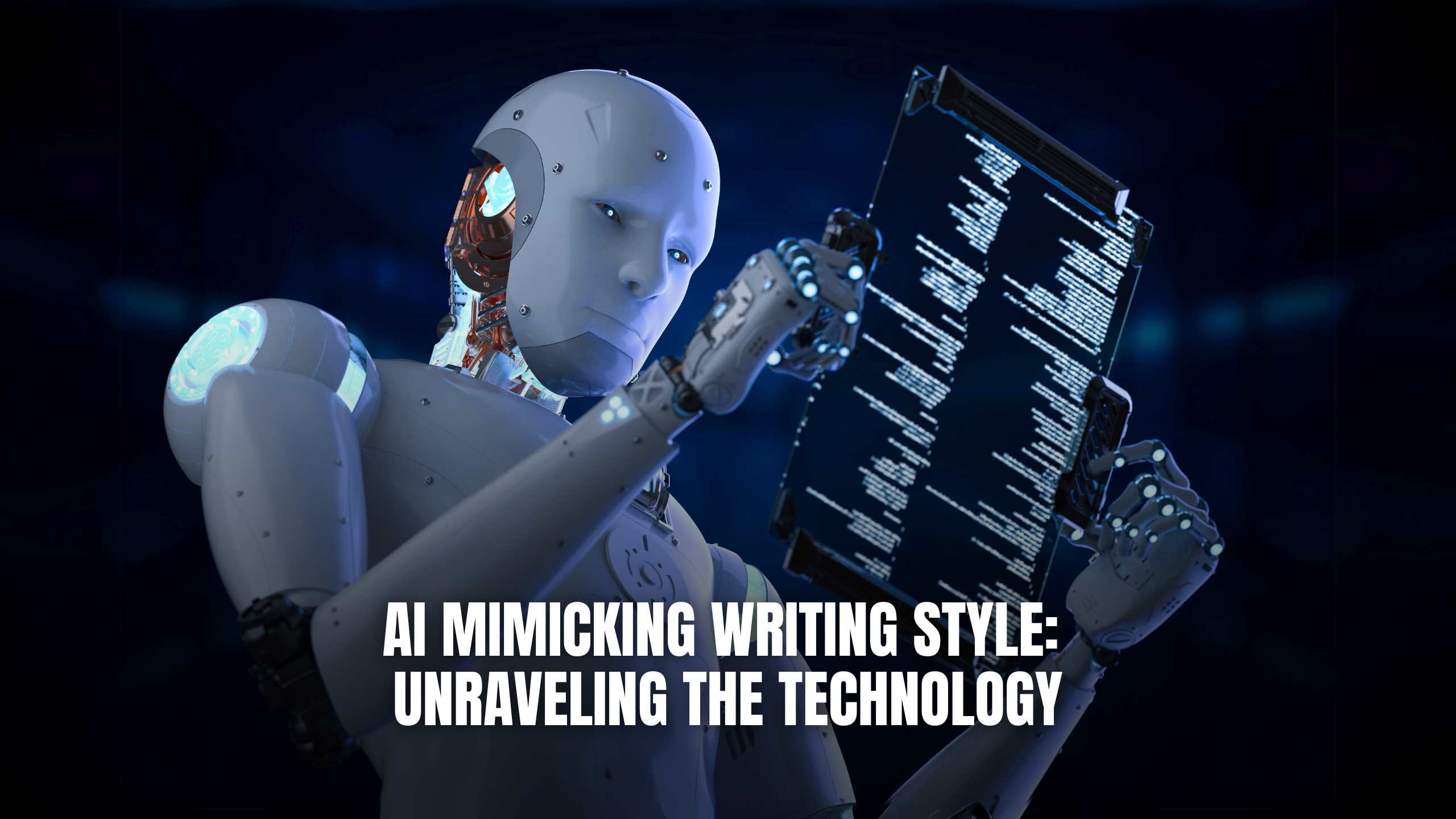AI Mimicking Writing Style: Unraveling the Technology
- AI Image Generators Software AI Writing Assistant Popular Tools AI Tools


AI Mimicking Writing Style: Unraveling the Technology
In recent years, AI technology has advanced to the point where it can mimic human writing styles with remarkable accuracy. This phenomenon raises questions about the underlying technology and its implications for content creation and plagiarism detection. Let’s delve into the intricacies of AI mimicking writing style and explore the technology behind it.
1. Natural Language Processing (NLP)
At the heart of AI mimicking writing style lies natural language processing (NLP). NLP algorithms, such as those used in OpenAI’s GPT series, analyze vast amounts of text data to understand linguistic patterns and structures. By training on diverse writing styles, these algorithms can generate text that closely resembles human-authored content. With advancements in deep learning techniques, NLP models can now capture subtle nuances in writing style, including tone, voice, and syntax, further enhancing their ability to mimic human writing.
2. Machine Learning Models
Machine learning models, particularly deep learning architectures like recurrent neural networks (RNNs) and transformers, power AI writing tools. These models learn from large datasets of human-written text to capture nuances in writing style, tone, and context. As a result, they can produce coherent and contextually relevant text that mimics human writing styles. By continually refining their parameters through iterative training processes, these models adapt to evolving linguistic trends and user preferences, ensuring that their outputs remain accurate and up-to-date.
3. Fine-Tuning and Customization
AI writing tools often allow users to fine-tune and customize their outputs to match specific writing styles. Platforms like Copy.ai enable users to input prompts and adjust parameters to achieve desired tones, voices, and levels of formality. This level of customization enhances the tool’s versatility and makes it suitable for various content creation purposes. Additionally, fine-tuning options empower users to tailor their content to specific audiences or branding guidelines, ensuring consistency and alignment with organizational objectives.
4. Plagiarism Detection Tools
As AI writing tools become more prevalent, the need for effective plagiarism detection tools becomes paramount. Platforms like Turnitin utilize advanced algorithms to compare submitted texts against vast databases of existing content, identifying instances of potential plagiarism. These tools help maintain academic integrity and ensure that AI-generated content is appropriately attributed. Furthermore, by leveraging machine learning techniques, plagiarism detection tools continuously improve their accuracy and efficiency, staying ahead of evolving plagiarism tactics and content duplication methods.
5. Content Creation Platforms
Content creation platforms, such as Writesonic, leverage AI to streamline the writing process and generate high-quality content efficiently. By automating tasks like brainstorming, drafting, and editing, these platforms enable users to produce engaging and original content at scale. Content creation platforms equipped with AI writing capabilities empower writers to focus on creativity and ideation while leveraging AI for execution and optimization. Moreover, by offering collaborative features and workflow management tools, these platforms facilitate seamless collaboration among team members, enhancing productivity and content quality across organizations.
Recommended SaaS Products:
- OpenAI’s GPT series: Cutting-edge AI models for natural language processing and text generation, enabling users to mimic human writing styles with remarkable accuracy.
- Copy.ai: AI-powered content creation platform that offers fine-tuning and customization options, allowing users to generate text tailored to specific writing styles and purposes.
- Turnitin: Leading plagiarism detection tool that leverages AI algorithms to ensure the originality and integrity of written content, essential for maintaining academic and professional standards.
- Writesonic: AI-driven content creation platform designed to streamline the writing process and produce high-quality, original content at scale, empowering users to focus on creativity and strategic content planning.
Conclusion
AI mimicking writing style represents a significant advancement in natural language processing technology. By harnessing the power of machine learning and NLP, AI writing tools can emulate human writing styles with astonishing accuracy. While these tools offer unprecedented efficiency and convenience for content creation, they also raise ethical concerns regarding plagiarism and attribution. As AI continues to evolve, it’s essential to strike a balance between leveraging its capabilities and upholding ethical standards in content creation.
Unlock the Power of AI Writing with Subscribed.fyi!
Ready to explore AI writing tools and enhance your content creation process? Sign up for free at Subscribed.fyi to unlock exclusive deals on top AI-powered content creation platforms and plagiarism detection tools. Discover secret deals and savings on SaaS products that can revolutionize your writing workflow today!
Relevant Links:





